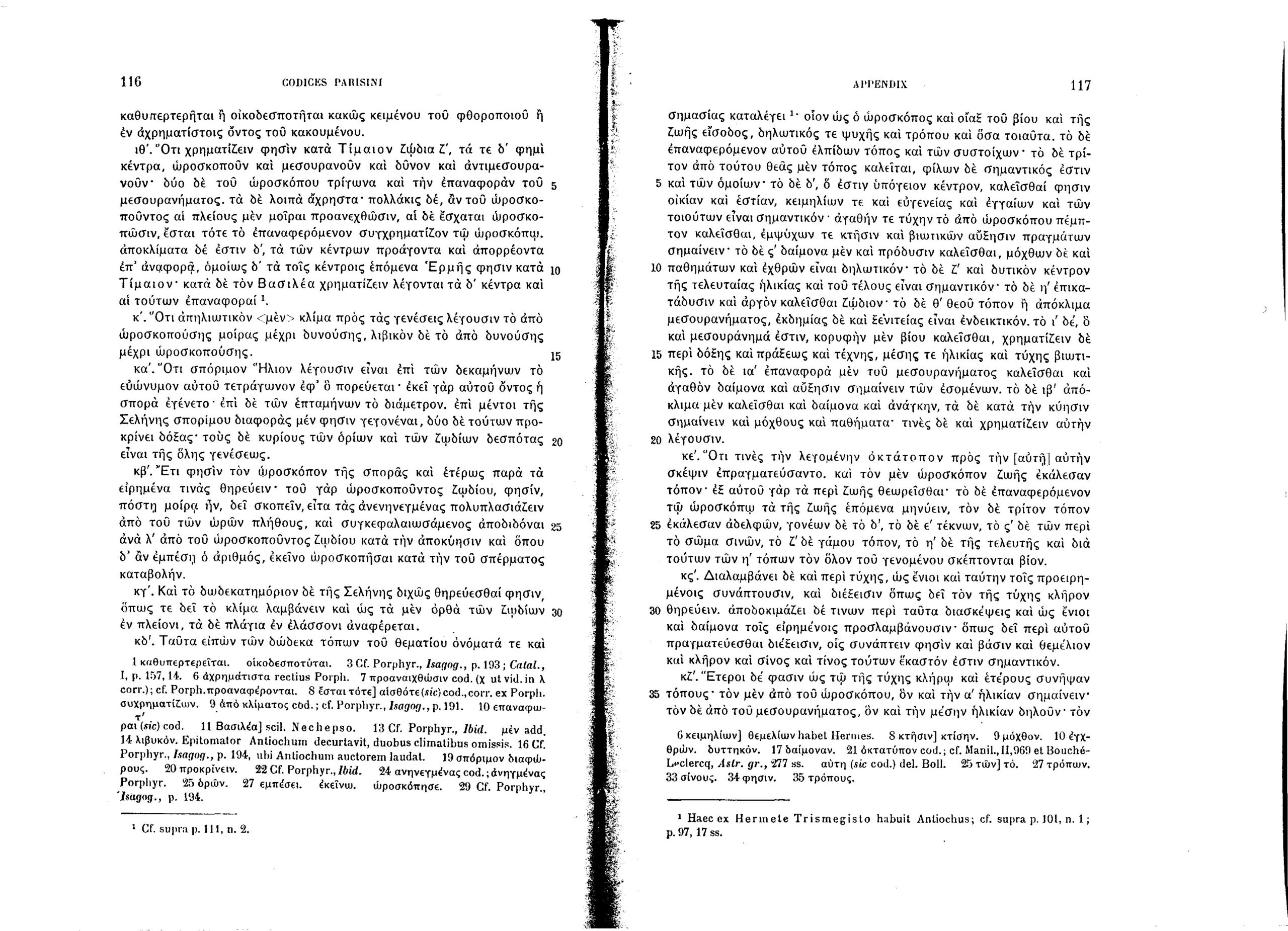No products in the basket.
Why Placidus is overrated & why you should consider switching to whole-sign houses
Dear NightFall Astrology readers,
The house systems debate is among the most heated in the modern astrological community. If you’re an astrology student or enthusiast, I’m sure you’ve already asked yourself: which house system should I use?
This article aims at providing the most objective answer based on the history of astrological houses and their rationale. Of course, as humans, we all have our preferences, but coming from a legal background, it’s crucial for me to choose the most logical argument. And from what I’ve learnt, researched, and tested, whole-sign houses are the winning and most parsimonious house division system.
When starting my astrological journey, I was using Placidus houses (the default system on most softwares and free online birth chart calculators) like everyone else.
I tested it empirically for a couple of years, and the results were good enough to average. Why? Most birth times I was working with were rounded up (if your birth time’s minutes are a multiple of 5, such as 10:00, 10:05, 10:10, 10:20 etc., chances are your birth time is off by a few minutes).
Sure, there’s the time/space/diurnal motion of the planets and precision/mathematical argument for this method of calculation (that became very popular during the age of enlightenment – 17th century – till today), but you get limited pretty fast once you start using it in natal astrology. Why? Because Astrology isn’t purely scientific, it has a strong metaphysical component. Astrology is one of the “Occult Sciences”.
Also, apart from the 80% chance of an approximate birth time (there are several reasons for that: no official birth records, foggy memory, mechanical versus digital clocks that might not have been exact, etc.), there are also people who are born at extreme Northern and Southern latitudes who can get so many intercepted houses (3 or more signs on one entire house), that house rulerships get thrown out of the window!
For other types of astrology (electional, horary, etc.), quadrant houses (Placidus, Porphyry, Koch et al.) are usually the most used system (especially Regiomontanus houses based on William Lilly’s horary tradition), and rightfully so, because the astrologer is more mindful of recording the exact moment (time) in these cases (the time the astrologer receives and understands the question for horary and choosing the “best time” for a specific event such as a wedding in the case of electional astrology). So in such specific circumstances, we have more control over the data we use.
However, it has to be pointed out that even in such cases, whole signs work pretty accurately and precisely (we have data and texts from medieval astrologers, such as Sahl ibn Bishr and Mashallah ibn Athari, using whole signs for horary questions too).
Furthermore, Hellenistic and Medieval astrologers (especially in the Arab tradition) used whole-sign houses by default. These findings come from a ton of effort from project hindsight and brilliant Babylonian astrologers (such as Rumen Kolev) in the 90s, who translated (and continue to translate) ancient astrological texts from Latin, Greek, and Arabic. I’ve also included my own point of view after reading some Arabic originals alongside the English translations.
Let’s first give a short definition and historical overview of “the houses” in astrology. Then, explain the difference between whole-sign and quadrant houses before this intro gets too long.
I. The origin of “houses” in astrology:
Houses are a 12-fold division of the zodiac into distinct sectors. The Babylonians watched the movement of planets through these sectors. In the 5th century BCE, Mesopotamian astrology was the first record of these 12 sectors, each corresponding to a zodiac sign based on the correlations of movement in that sky sector.
The Egyptians were focused on the rising and setting of fixed stars, particularly how they applied to the Nile, meaning the flooding in the riverbanks and the farming implications. That led them to divide the sky into 36 sections leading to the decans we have today. This is a 36-fold division of the sky based on the locations of fixed stars. This actually turned into the basis for what we call “houses”. The ancients called them “places”.
Around 1,000 BCE, this knowledge was transmitted from Mesopotamia to Egypt, where signs and houses began melding, and the idea of the 12 houses seems to have come about because of the concept of the 12 signs. So, the 36 decans were grouped into 3 parts of 12.
Hellenistic astrology is, therefore, the period of the first century BCE to the 7th century CE. This was when Alexander the Great’s Empire flourished; therefore, astrological knowledge also bloomed. The interconnection of various cultures led to so much synthesis of various ideas from Indian and Greek astrology… all the things really came about and were synthesised during this time.
Hellenistic astrology is where horoscopic astrology came about, which uses the “horoscopus” or the “hour marker” (commonly known as the Ascendant) to begin the chart. This is the first tradition to have clearly defined the starting point of a chart as the Ascendant point. The Ascendant is the degree of the sign rising over the eastern horizon at a given moment.
Then, they divided up the entire chart by the Ascendant/Descendant axis and the Midheaven/Medium Caelum (MC)/Imum Caelum (IC) axis. These became the four quadrants of the chart. And Hellenistic astrology blended Babylonian omens, Egyptian fixed star work, and Greek philosophy and mythology. This is where the concepts of 7 planets, 12 signs, and 12 houses really flourish, and that’s the basis for Western astrology today. If you go back and look at these ancient authors and text sources (such as Valens, Dorotheus, Paulus Alexandrinus, etc.), it is volumes and volumes of material showing very clearly that whole sign houses were the original form of house division.
The fact that it is the original system makes it vital to understand because it means that every other house system originated followed from that basis, and it means that the origins of whole sign houses are buried into every other house system.
II. What are whole-sign houses?
In this system, one house equals an entire sign (all of its 30 degrees). The Ascendant sign is the whole first house, for example, regardless of the degree of the hour marker or the Ascendant.
The rest of the houses fall accordingly; subsequently, each sign corresponds with a whole house.
House meanings are derived from their whole sign aspect to the Ascendant in large part. For example, the first house being the rising sign; this is where the body rises, where you come to life, your vibrancy, your personality and character. The seventh house is where the Sun sets; it’s your union with another party in things like marriages, opponents, or contracts. Another example is the ninth house, which is rising up to the tenth house (the tenth house being the highest and most public point in your chart, aka career and public image). So, the ninth house is rising up to the tenth, and what supports career and publicity? Your path of knowledge, higher education, long-distance travel plans, experiences, or origins.
The lack of aspect to the Ascendant also dictates the challenging/difficult nature of the 2nd, 6th, 8th, and 12th houses.
This system’s oldest evidence (to date) dates back to Hermes Trismegistus himself.
“Hermes is a legendary Hellenistic figure that originated as a syncretic combination of the Greek god Hermes and the Egyptian god Thoth. He is the purported author of the Hermetica, a widely diverse series of ancient and medieval texts that lay the basis of various philosophical systems known as Hermeticism. The wisdom attributed to this figure in antiquity combined knowledge of both the material and the spiritual world, rendering his writings of great relevance to those interested in the interrelationship between the material and the divine.” (Van den Broek, Roelof (2006). “Hermes Trismegistus I: Antiquity”. In Hanegraaff, Wouter J. (ed.). Dictionary of Gnosis and Western Esotericism. Leiden: Brill. pp. 474–478).
Most of the ancient astrologers refer back to him. We know this thanks to various translations of the Catalogus Codicum Astrologorum Graecorum (CCAG): a 12-volume (including appendices) catalogue of astrological writings in Greek. The CCAG edited, described, and excerpted from texts found in libraries throughout Europe, most edited and catalogued for the first time. The CCAG was published between 1898 and 1953 in Brussels. The chief editors in the earlier period of publication were Franz Cumont and Franz Boll. The CCAG was described as the “most important” modern survey of Greek astrological writings.
I’d like to cite one of the earliest pieces of evidence for this system, attributed to the Hellenistic astrologer “Antiochus of Athens”, who flourished sometime between the late 1st and mid 2nd century AD. The doctrine that I’ll briefly describe here is “the doctrine of the dynamic strength” of the houses/places based on the culmination of the signs (not the degrees). This passage is from Antiochus_CCAG_8_3_page 116 # 19 (translated by my dear teacher and brilliant Babylonian astrologer Rumen Kolev):
“According to Timaios, seven are the signs which are useful (strong): the four angles, the rising, the culminating, the setting and the anti-culminating. The two trines to the rising sign and the sign next to culminate. The rest is not useful (strong).
Often, if most of the degrees of the rising sign have already risen and its last degrees are rising, then the succedent sign (the second) is as useful (strong) as the rising sign.The falling signs are four, those which rise before the angle signs and which flow off to the succedent, which are the same four signs which follow the angular ones. This was said by Hermes, according to Timaios. According to the King (Nechepso), the useful (strong) signs are the four angles and the four succedents to them.”
Please find below an image of the original Greek text as included in the CCAG.
III. What are quadrant houses?
Quadrant houses divide the chart into the Ascendant/Descendant and the MC/IC axes, and they can use time- or space-based divisions to divide those quadrants into three sections. So, for example, Placidus uses divisions by time, and Porphyry takes the (space) distance between the Ascendant/Descendant and MC/IC axes and divides them by three.
I won’t describe all the different quadrant house divisions here. There are dozens of them, and they create four quadrants, then divide them into three (the basic rationale remains the same).
Where did quadrant houses first appear? This is where a lot of research and translation was done by contemporary astrologers such as Robert Hand, Robert Schmidt, Robert Zoller, and Chris Brennan.
Among the ancient authors, we have Valens, who’s one of the easiest to understand, and essentially, is using whole-sign houses all the time except when he’s measuring the length of life: that’s where he uses quadrant houses as a secondary overlay. The house degree cusps were used as sensitive timing points. He introduced Equal and Porphyry houses.
Quadrant houses were also used as a secondary overlay for the distribution through the bounds (subdivisions of signs) predictive technique.
Both predictive techniques are based on primary directions. Primary directions are another topic I can’t possibly cover in this article. Still, I’ll give you one example you might be familiar with: secondary progressions, which are a type of primary direction (we direct/move the celestial sphere, aka the chart through time).
So, technically, first came equal houses where each house is still equal, but it all starts at the same degree as the Ascendant. Again, I repeat, quadrant houses were used as a complementary calculation method, not as a system on its own.
{ Side note: other than Valens, one of the leading ancient Roman astrologers – Firmicus Maternus (4th century AD) – used ONLY equal houses in his calculations (based on an older foundational text by Asclepius (around 1st century BC), so I’d say with a rounded-up birth time and/or an event or a person ‘born’ at extreme latitudes, equal houses are the 2nd safest bet after whole signs }.
Whole-sign houses, the baseline of house divisions, were probably taken for granted because of the mistranslation or misunderstanding of the ancient and medieval Arabic texts (this has actually happened with Abu Mashar’s books). Consequently, quadrant houses were read out of context. As mentioned in our introduction, the obsession with reason and mathematics (and their excessive glorification), starting from the 17th century and the Age of Enlightenment until today, popularised quadrant houses immensely.
Placidus arose as the most popular during the 20th century because, in large part, those were the calculated tables available to us due to a historical accident and what survived before the age of the internet. So, it’s not as if Placidus was the more logical or best; it was literally a historical accident of the availability of tables. Suddenly, every website is using Placidus as the default house system.
Plus, whole-sign houses already have quadrant houses built into them: what you call the “floating” Ascendant, Descendant, Midheaven/Medium Caelum (MC) or Imum Caelum (IC). The detail you get with quadrant houses is already there: for example, whatever sign the MC falls in (let’s presume it doesn’t fall in the same sign as the 10th house), it imports the 10th house/career meanings into the said house (the MC can fall anywhere from the 8th to the 11th houses – sometimes the 12th and the 7th if the person is born at very extreme latitudes).
In sum, it’s not whole signs versus Placidus; it’s quadrant houses versus whole-sign houses. Placidus is one of the dozens of quadrant house systems. I don’t see it as a versus because they’re two different categorical systems; there’s no need for them to compete or reconcile. One originates from the other; that’s a historical fact.
That being said, all house systems are valid (Astrology isn’t purely scientific, remember?), but for the sake of efficiency and simplicity, whole-sign houses are the best option that’s been tested long enough through thousands of years. So, for me, the empirical argument always wins. Finally, and I’m putting forward the legal rationale here again, if you’re unable to explain it simply and comprehensively, then you haven’t mastered the subject. And with quadrant houses, the chances of getting lost in calculations and confusing the client are pretty high.
Otherwise, the discussion is open in the comments.
Thank you for reading.
Fuel my caffeine addiction and spark my productivity by clicking that ‘Buy me a coffee’ button—because nothing says ‘I love this blog’ like a hot cup of java!
Buy Me a Coffee
Your Astrologer – Theodora NightFall ~
Your next 4 steps (they’re all essential but non-cumulative):
Follow me on Facebook & Instagram!
Subscribe to my free newsletter, “NightFall Insiders”, the place where the most potent magicK happens, and get my daily & weekly horoscopes, exclusive articles, updates, and special offers delivered directly to your inbox!
Purchase one of my super concise & accurate mini-readings that will answer your most pressing Astro questions within 5 days max!
Book a LIVE Astro consultation with me.













